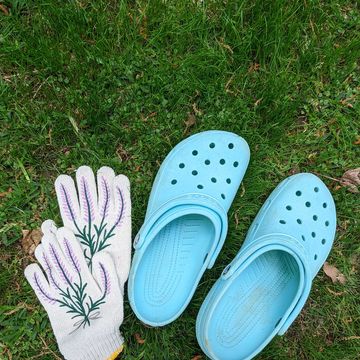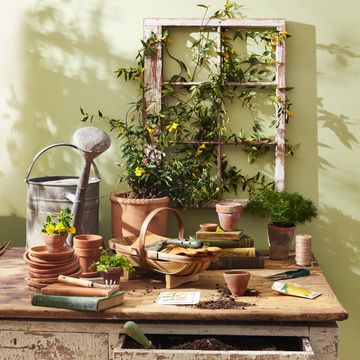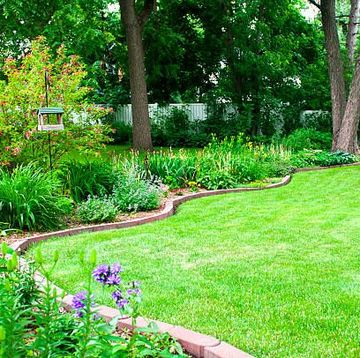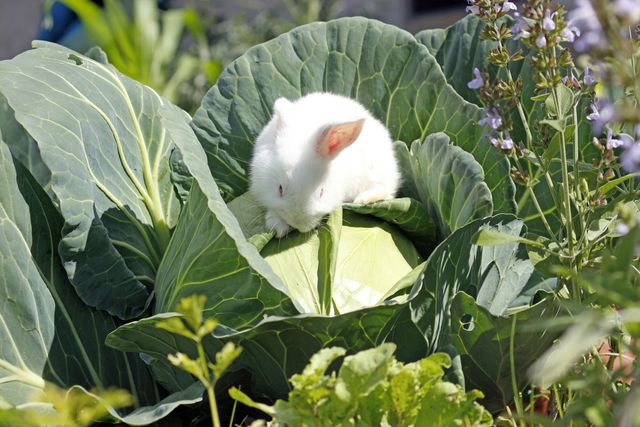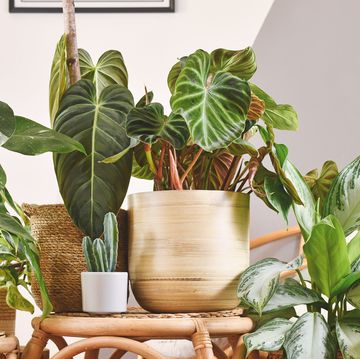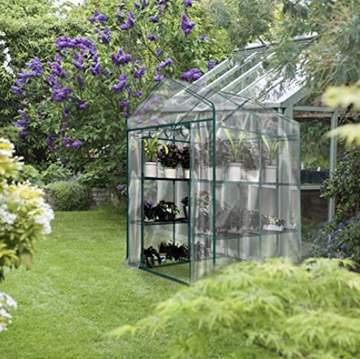1Identify the culprit.
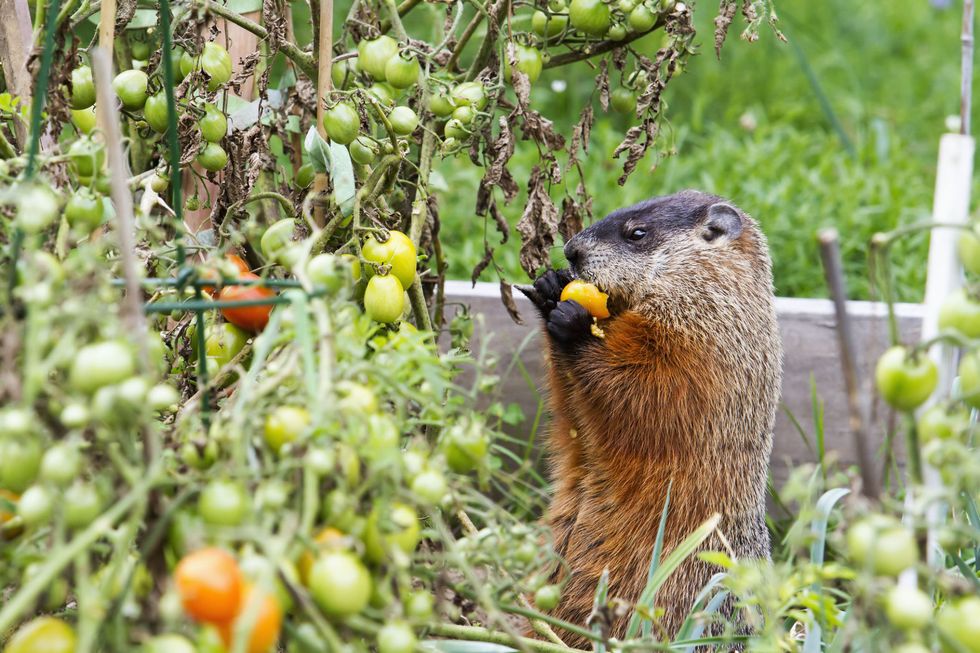 Getty Images
Getty ImagesChoosing the right kind of management methods, such as how tall a fence you might need, means you have to figure out who's eating what. "Critters most likely to case the quickest damage are deer, rabbits and groundhogs," says Tarr. Look for telltale signs: Deer may leave tracks in the soil and make clean snips on herbaceous plants or tear woody plants. Rabbits make sharp cuts on herbaceous and woody plants and may leave pellet droppings. Groundhogs leave large mounds of dirt 10" to 12" in diameter at entrance to their burrows, typically eating greens, not woody shrubs. Birds peck holes in fruit or steal it before you even know it's ripe.
2Fence it.
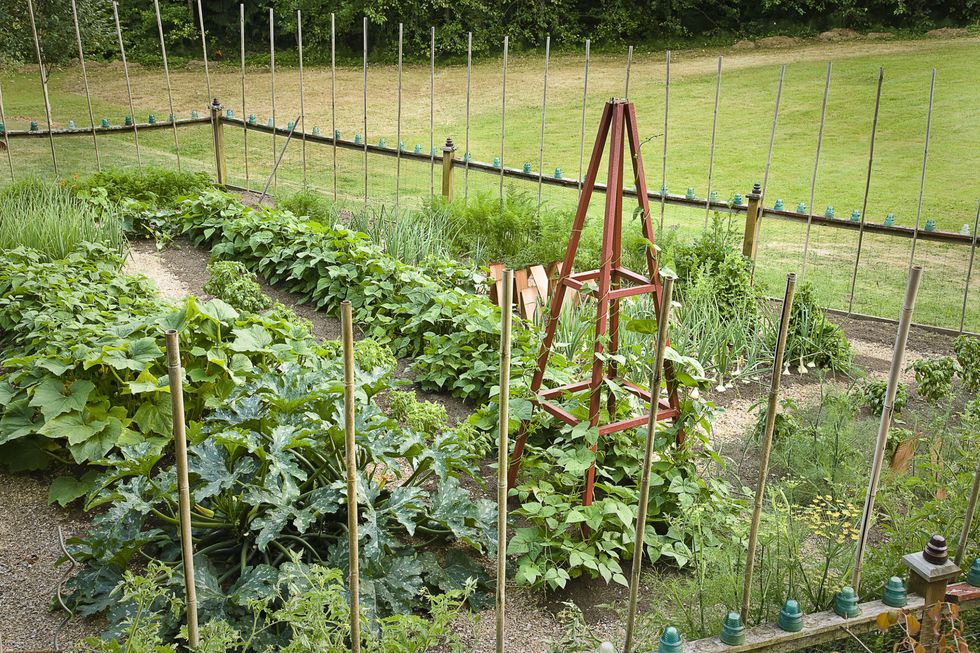 Getty Images
Getty ImagesFencing is the most effective (and sometimes only!) way to keep unwanted visitors out of your garden. "Put up a fence from day one to prevent them from finding the food source in the first place," says David Drake, extension wildlife specialist and professor at the University of Wisconsin-Madison. A fence that's a few feet tall will work for most rabbits, though persistent bunnies and groundhogs may burrow under. To prevent that, bury it about 10" deep. Chicken wire, hardware cloth, or rabbit fencing are the least expensive alternatives for small mammals. A fence that's at least 4 feet tall will work for many deer situations. But if your neighborhood is overrun by deer, you may need one that's 8 feet tall. Plastic bird netting can be placed over small edible bushes like berries the week or so before they ripen, to protect fruit.
3Choose less tasty plants.
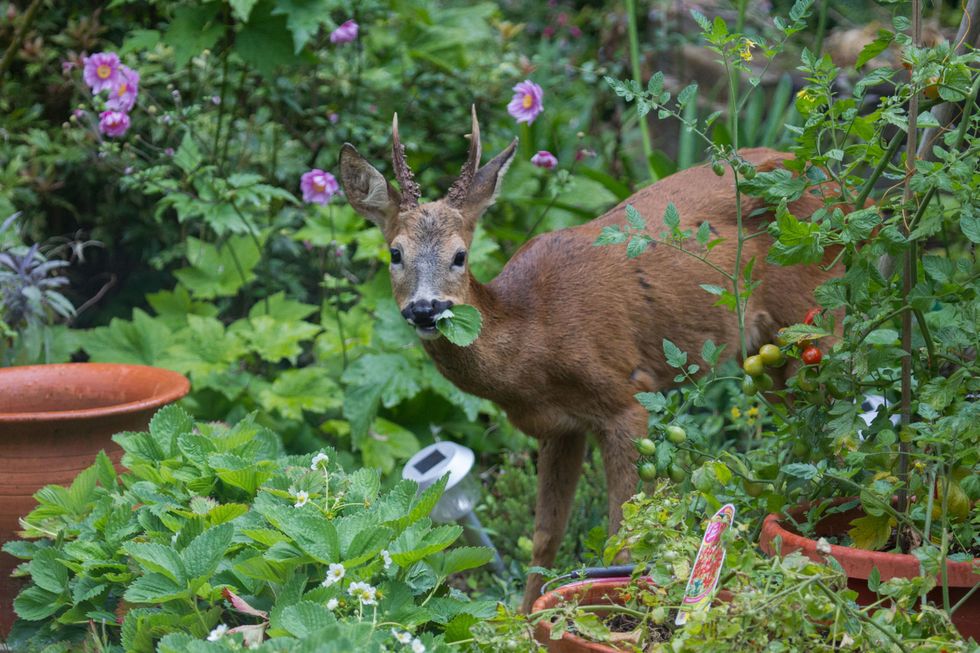 Getty Images
Getty ImagesWhen they're hungry enough and competition for food is high, animals will eat anything. "Nothing is foolproof," says Tarr. But there are certain kinds of plants that are less appealing than others, especially plants that are highly aromatic, fuzzy, or have prickles. Thus, while hostas, arborvitae, and azaleas are often favorites for deer, they're generally not interested in many types of ornamental grasses, holly, and barberry. Look around your neighborhood to see what's fared well, talk to nurseries, and consult your local coop extension service for lists of less tempting regional plants.
Advertisement - Continue Reading Below
4Protect new plants.
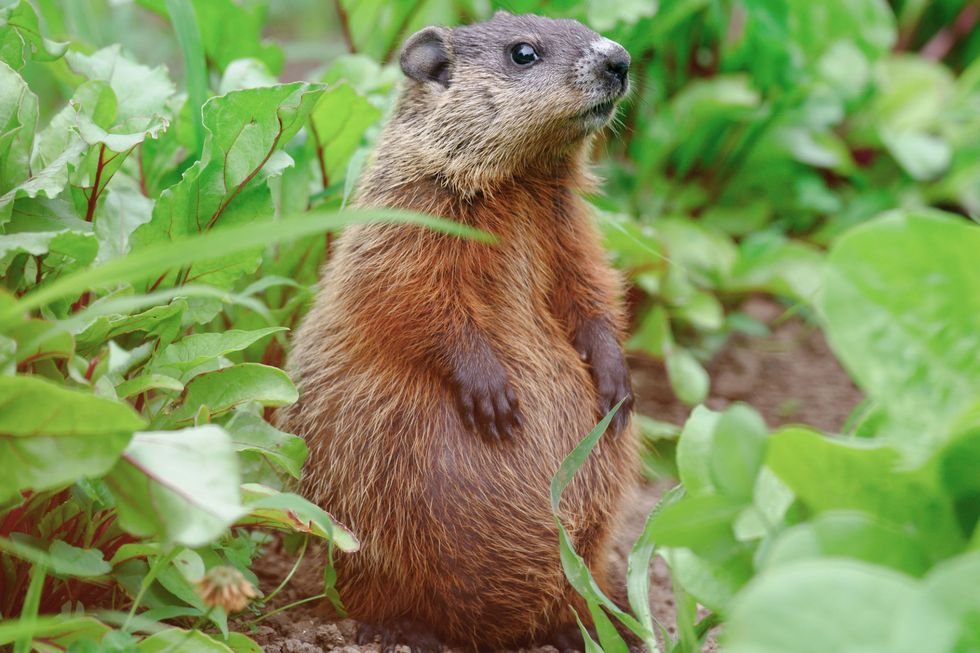 Getty Images
Getty ImagesThose brand-new nursery plants, which have been pampered and fertilized before you bought them, offer delectable, tender new growth. "Whether a plant is tasty or a deterrent to animals has to do with the nutrient and chemicals a plant produces," says Tarr. "Plants recently purchased from a nursery are nutritionally superior. The animals can sense those micronutrients, and they're naturally attracted to them." New plants also cannot withstand as much grazing damage as established plantings. Fence off or use trunk wraps or protectors for new plants and shrubs once you put them in the ground.
5Garden in pots and raised beds.
 Courtesy of EarthEasy
Courtesy of EarthEasySometimes you can eliminate nibbling opportunities by elevating pots or planting in raised beds. A raised bed two feet or taller will limit rabbit damage, especially if you add a short fence on top. Pots can be mounted on railings, or try planting greens in window boxes out of the reach of hungry bunnies.
Cedar Complete Raised Garden Bed Kit, $979 BUY NOW
6Don't be too tidy.
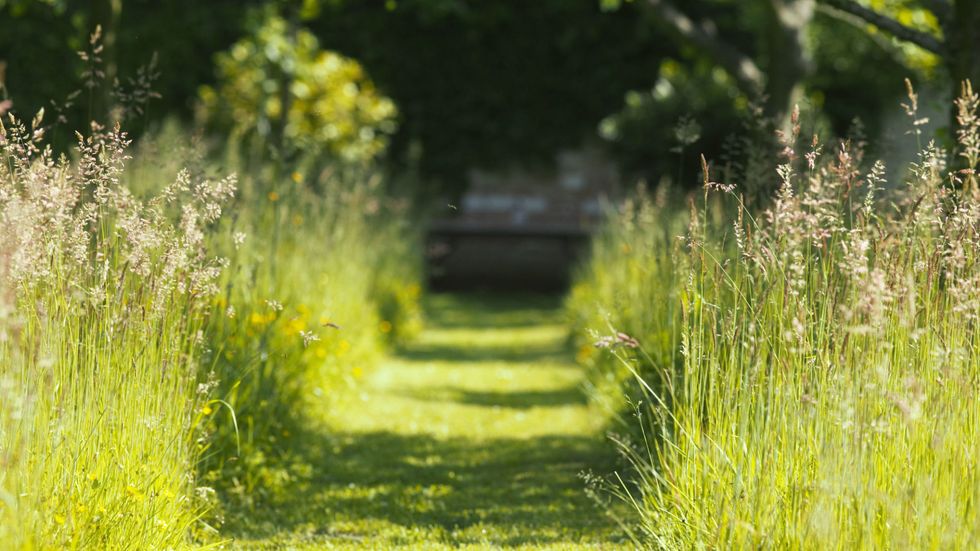 Getty Images
Getty ImagesIf you live in a less urban area, let the shrubs and grasses around the edges of your yard go a little wild. "If there are a lot of other opportunities for food around you, your garden will be less attractive," says Tarr. "Animals will be less likely to come out into the middle of the yard to your garden to expose themselves to predators if there are other good food sources along the edges."
Advertisement - Continue Reading Below
7Contain your compost.
 Getty Images
Getty ImagesOpen compost piles attract all kinds of creatures that then discover the other delicacies in your backyard, says Drake. Use a self-contained compost bin with a lid to keep marauders away. And if you feed your pets outdoors, be sure to bring their bowls inside after meals so you won't attract skunks, opossums, and raccoons.
8Scare them away.
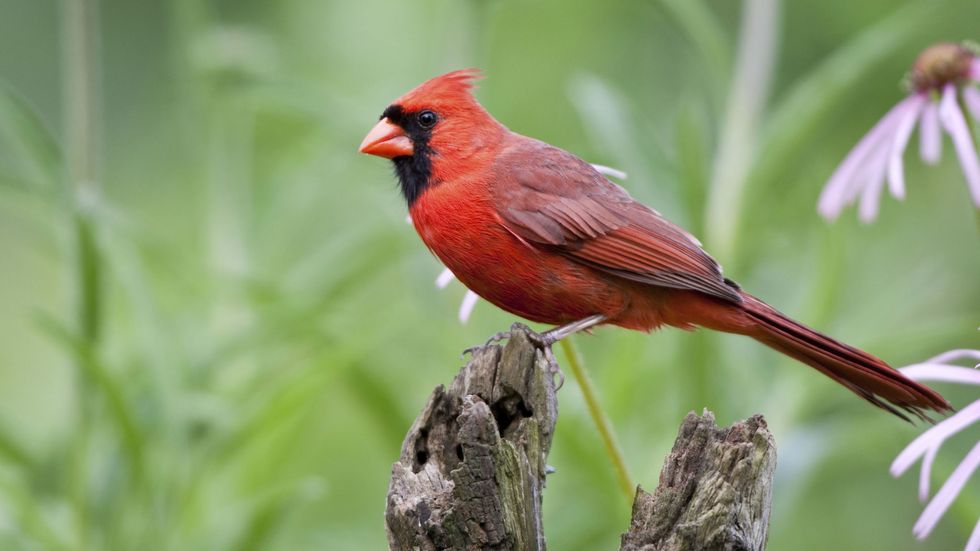 Getty Images
Getty ImagesMetallic streamers, or bird tape, or an old-fashioned scarecrow may keep birds away, though you'll have to move it around daily. "You can't let it just sit there. Otherwise, once they get used to it, that particular technique loses its effectiveness," says Drake. Motion-activated sprinklers or lights are another possibility for mammals.
9Try repellants (with fingers crossed).
 Getty Images
Getty ImagesOdor repellants are granular and attempt to keep the animal away from an area in the first place with a bad smell. Taste repellents are sprayed on vulnerable plants. They repel by flavor or by causing the animal to feel sick when they ingest the treated plant. "It's sort of like if you ate at a buffet and became ill," says Drake. "You wouldn't want to go back there anytime soon, and neither does the animal." It's important to note that while repellants may upset wildlife tummies, they are not designed to hurt the animals—just to train them to stay away from a specific area. But taste is personal, so some animals will eat treated plants anyway or will get used to the bad taste. Also, these products typically have to be used year-round and must be reapplied after rain. Of course, you'll want to keep your pets away from repellants of any sort, too. Homemade repellents using human hair, bars of soap, garlic, or a host of other ingredients don't work much better. "Try them until you get sick of trying them, then put up a fence," Drake suggests.
Advertisement - Continue Reading Below
10Do a reality check.
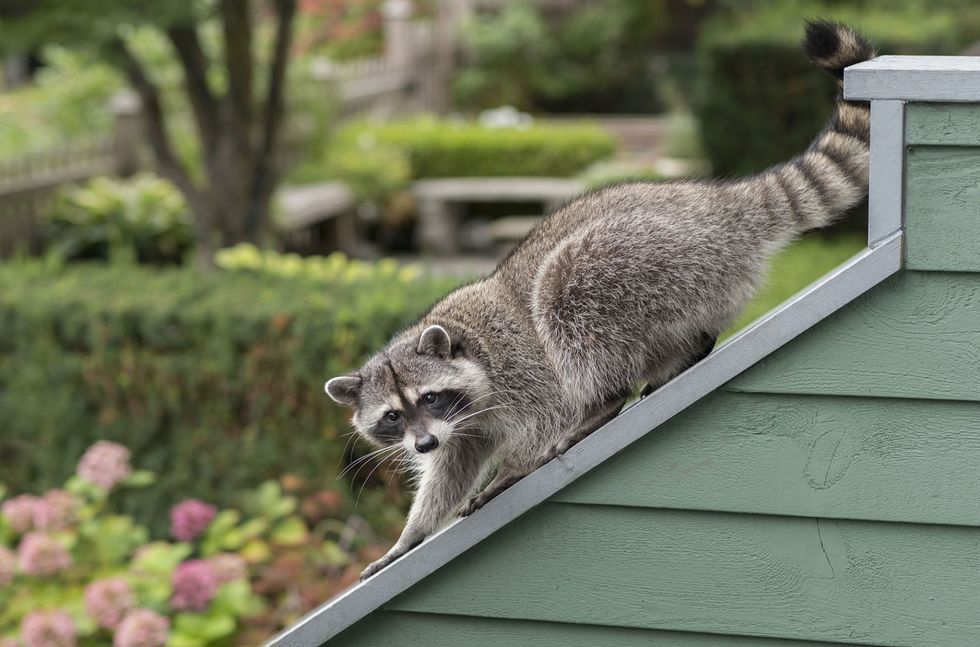 Getty Images
Getty Images"In any given year, a number of factors including the severity of the winter and the number of animals in the area affect how much damage you may incur," says Drake. There are good years (when you'll see little loss) and bad years (when you'll feel like you opened up a free salad bar for the neighborhood critters). Keep your perspective though, and realize what you're doing in your yard benefits the local wildlife, too, even if you didn't get to enjoy that heirloom tomato you planted. As a gardener, there's always next season!

Arricca Elin SanSone has written about health and lifestyle topics for Prevention, Country Living, Woman's Day, and more. She’s passionate about gardening, baking, reading, and spending time with the people and dogs she loves.
Advertisement - Continue Reading Below
Advertisement - Continue Reading Below
Advertisement - Continue Reading Below

